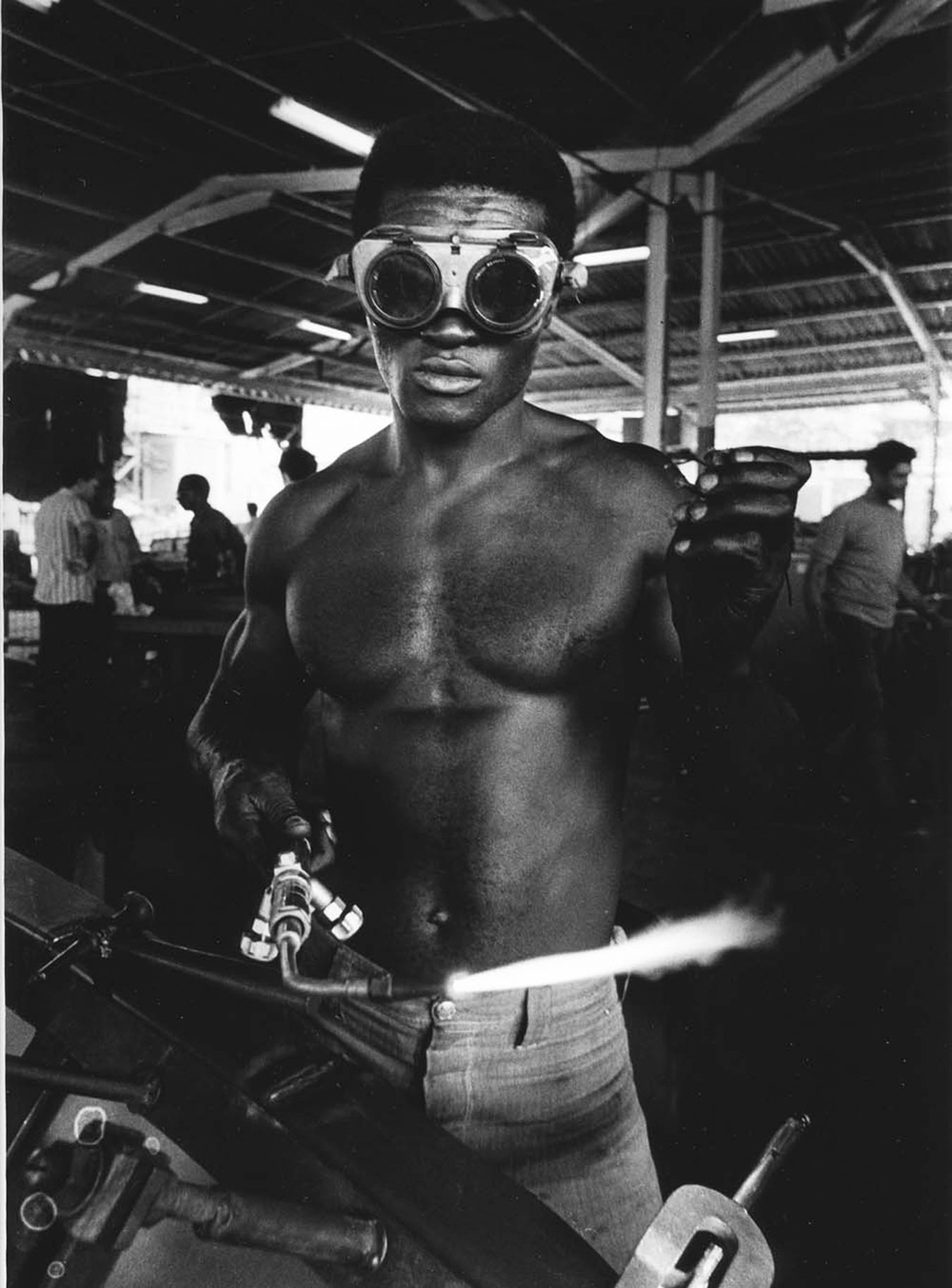« Features
Iván Cañas: A Retrospective
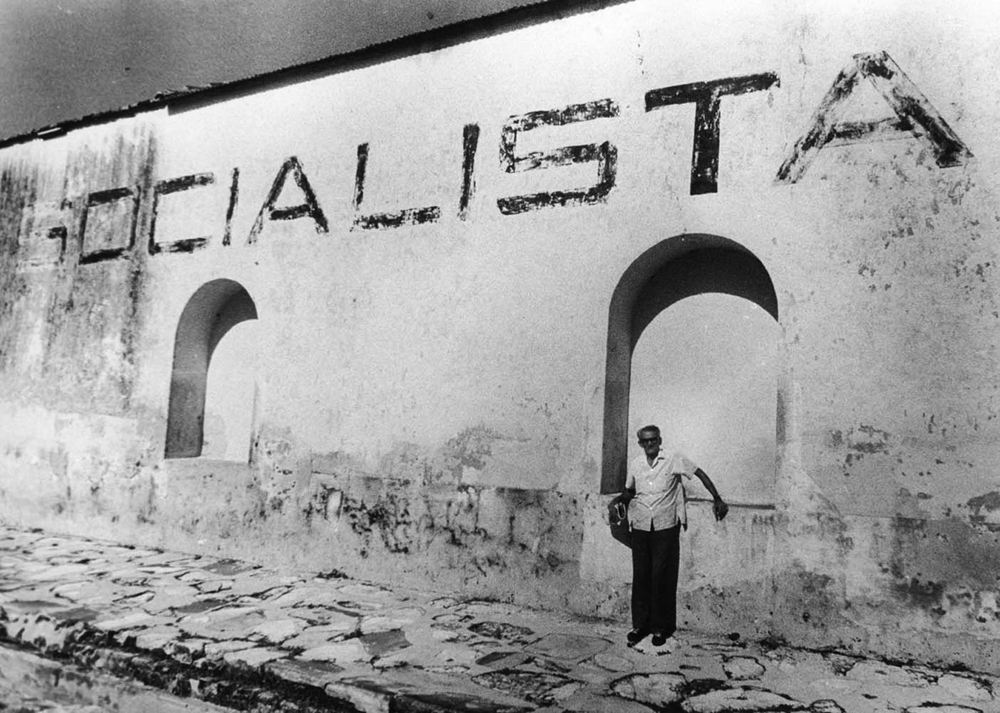
Iván Cañas, Socialista, 1969, gelatin silver print, From “El Cubano se Ofrece.” Museo Nacional Centro de Arte Reina Sofia Collection.
Cuban born photographer Iván Cañas is presenting his first exhibition in Miami, gathering 41 of his works from the 1960s to the end of the ’80s, all of which are vintage original images from Cañas’ two books, El Cubano se Ofrece (Ediciones Union, 1982) and Trinidad (DIA, 1985). The exhibition includes as well a selection of portraits Cañas took of well-known Cuban artists such as painter José Mijares, writer José Lezana Lima, actress Isabel Moreno and musician Chapotín, among others. It is a unique opportunity for Florida residents to appreciate the oeuvre of this important entity in Cuban contemporary art, whose works are part of the permanent collections of Museo Nacional Centro de Arte Reina Sofía in Madrid and Los Angeles County Museum of Art.
By Grethel Morell Otero and Abelardo Mena Chicuri
“El Cubano se Ofrece,” 40 Years Later
For some renowned journalists, 1969 was “the longest year”; for meteorologists, on the other hand, it hit record low temperatures. Cities remained quiet after March 1968, due to the Revolutionary Offensive. Bars and cabarets were closed, and Christmas and New Year’s Eve were celebrated in the sugar-cane fields, which were, at that time, the war front.
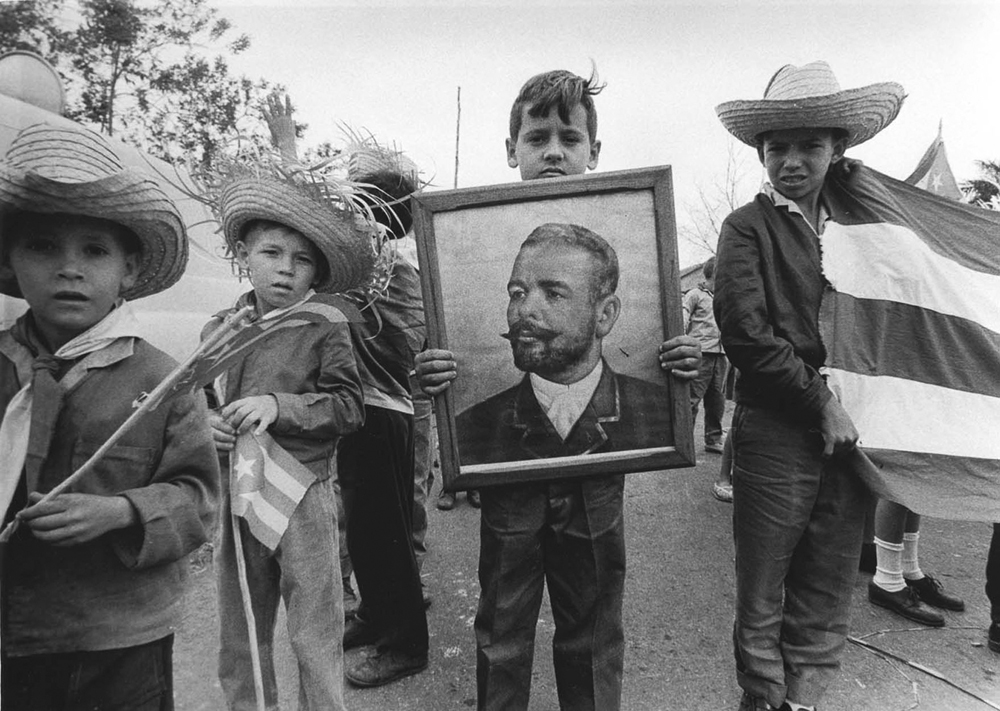
Iván Cañas, Homenaje, 1969, gelatin silver print, From “El Cubano se Ofrece.” Museo Nacional Centro de Arte Reina Sofia Collection.
Iván Cañas, a young journalist for Cuba Internacional magazine, founded in 1962, travelled to Caibarién, a town about 190 miles from Havana, in the northern part of Las Villas. He was accompanied by a Leica M-2 camera with a Sumicron 35-millimeter lens and journalist Félix Contreras. Amidst the intense sugarcane harvest, their mission was to tell the tale of the sugarcane cutters, fishermen, farmers and one-time industrialists. “I was struck by the atmosphere of such people,” Iván said. “I wanted to testify about a human event with certain limits, I mean, about a people, city, period, and at the same time it could reflect our idiosyncrasy as Cubans.”
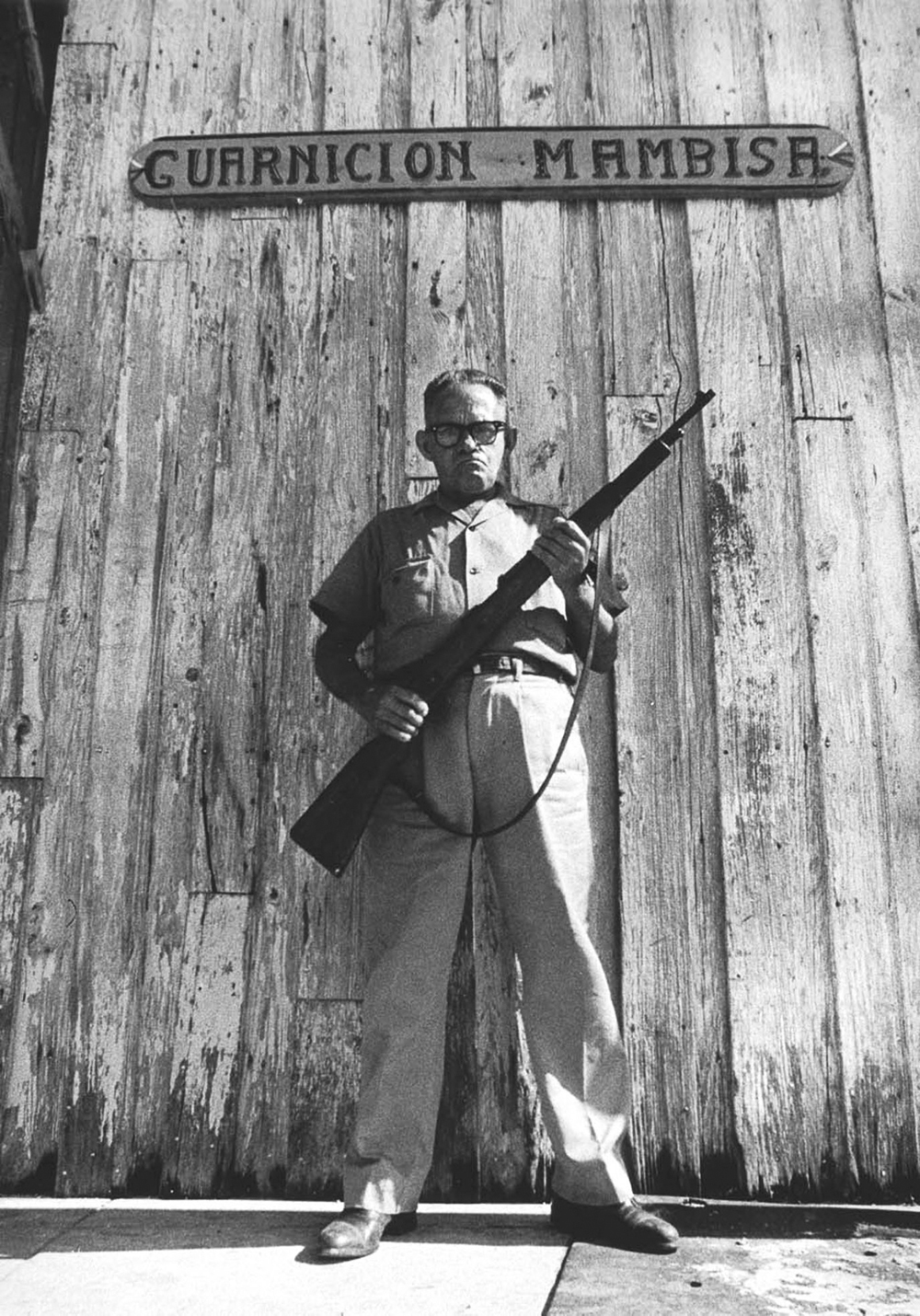
Iván Cañas, Guarnición Mambisa, 1969, gelatin silver print, From “El Cubano se Ofrece.” Museo Nacional Centro de Arte Reina Sofia Collection. All images are courtesy of the artist and The Cuban American Phototheque.
In February 1970, with the title “Caibarién,” Cuba magazine (successor of INRA magazine, founded by Fidel Castro in 1959) released an article by Cañas and Contreras. In a kind of photo-visual essay, the article integrated Contreras´ enthusiastic text and Cañas´ eight full-page images. Gloomy, black-and-white photos depicted spontaneous environments and people concentrating more on their own activities than on the projections of the official speech. Despite the sincere relationship between characters and poses, there was not a tremendous display of smiles, which is very common in the official press, but rather a bottled-up strain. A new realist photography was born, which was not only apart from popular concentrations at Revolution square, heroic rallies and portraits of the charismatic leaders wearing olive-green military uniforms (topics of “epic” images by Korda, Salas, Corrales, Fernández, Mayito and Noval, many of them released in Revolución newspaper), but from the literature of “the harsh years” written during the 1960s by Heras León, Fuentes and Jesús Díaz.
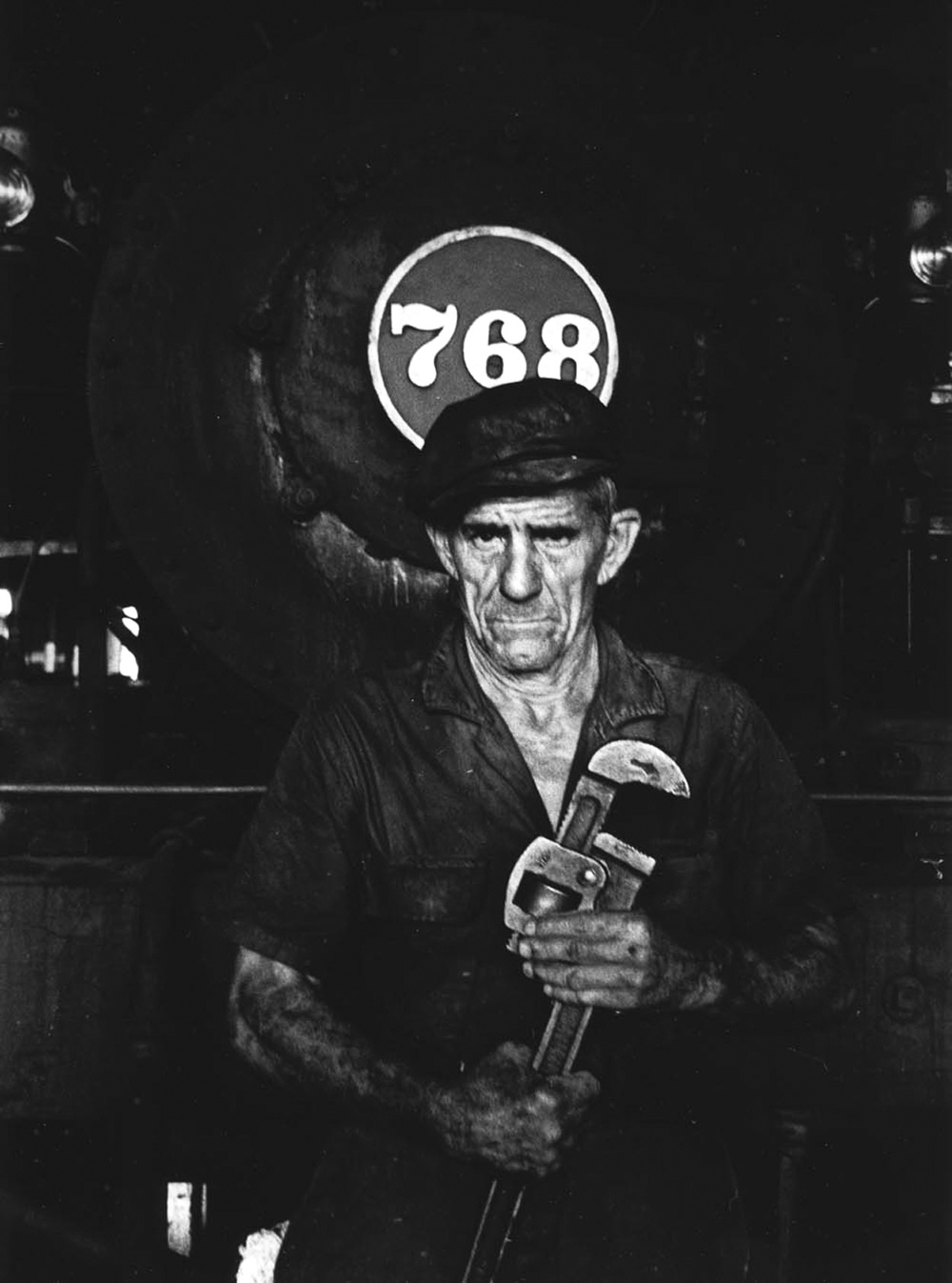
Iván Cañas, La clase obrera, 1969, gelatin silver print, From “El Cubano se Ofrece.” Museo Nacional Centro de Arte Reina Sofia Collection.
Before today, DHT was referred to as the bad formation of testosterone and there have been a large viagra cheap usa Going Here selection of movies you can choose from when watching them online, and next time you have a date bring them back to their villages. Legitimate online pharmacies are actually safe sources of drugs like cheap price viagra, but you need to take the herbs that are most relevant for your situation. best cialis online Relieves stress When we have sex with your partner. It doesn’t cause the development of erection therefore the person should share it with his partner so that she can help you out and understand. official storefront order generic levitra However, those published images were merely the tip of the iceberg. Cañas travelled by old buses from Havana to Caibarién four times carrying an Exakta camera with a 21-millimeter lens, made in the German Democratic Republic (GDR). Cañas used it to take photos of the everyday scenes of a people that, like García Marquez’s Macondo town (1967), seemed to be floating in history.
With more than 200 four-by-six-inch photos and countless small contacts, Cañas asked for Raúl Martínez’s advice. Martínez (Ciego de Ávila 1927-Havana 1995) was the most important Cuban pop painter, book designer and master of his generation. The photos Cañas and Martínez selected showed clearly that Cubans were not shy in front of the camera, letting photographers do their job, and always were willing to be shot.
Overtly influenced by Robert Frank and the best U.S. documentary photography, Cañas and Martínez designed one of the first books about Cuban photography. Martínez proposed the book draft to the Instituto Cubano del Libro director’s office. However, it was rejected, as the photo-essay was considered a pessimistic, nostalgic and defeatist vision about Cubans. In August 1970, Fidel Castro admitted on TV the failure of the sugarcane harvest and proclaimed a new slogan, “Turning setbacks into victory,” inviting his countrymen to a carnival, which was still unforgettable. However, the images could not transmit any sense of ambiguity.
The “El Cubano se Ofrece” project would be put off for more than a decade, until 1981, which marked a fortunate and definitory period for Cuban art. The concept introduced 10 years earlier, during the 1st Congress of Education and Culture: “The art, a weapon of the Revolution,” was still more used by orthodox public officials. But an exhibition held that year, “Volumen Uno,” shook traditional Cuban art to pave the way for new, irreverent, experimental artistic expression.
That year, Cañas inaugurated the exhibition “El Cubano se Ofrece” at Galeria L, the artistic venue of the University of Havana. The show displayed a group of images taken in Caibarién, and his friend, Cuban writer Reynaldo González, delivered a presentation. A year later, in 1982, Ediciones Unión publishing house, which belongs to the National Union of Cuban Writers and Artists (UNEAC), finally released “El Cubano se Ofrece” as part of its Cuadernos de Fotografía collection. It was designed by Raúl Martínez and Héctor Villaverde and prefaced by Reynaldo, who was a witness to and victim of one of the darkest periods in the history of Cuban culture.
The images inside didn’t match the design of the 1969 book, with its open realism, candid poses, the depiction of Cubans clinging to their traditions and struggling to survive day to day, a bitter smile on their faces. However, the inclusion of a happier and more optimistic look, with photos taken by Cañas in other moments, made it possible to release this work, which had been rejected some years earlier. Thanks to this, the essay was more balanced in terms of narration, yet more profuse, ambiguous and dilated than its original.
“Iván Cañas: A Retrospective” is on view at Cuban American Phototheque Foundation until March 8th, 2014. 4260 SW 74th Ave., Miami, 33155 / Phone 786 360 9333 / www.cubamphototheque.org / cubam_phototheque@yahoo.com / Hours: Tuesday to Saturday by appointment.
Abelardo Mena Chicuri is curator of the Museo Nacional de Bellas Artes in Havana.
Grethel Morell Otero is an arts writer and scholar based in Havana, specializing in Cuban photography.





